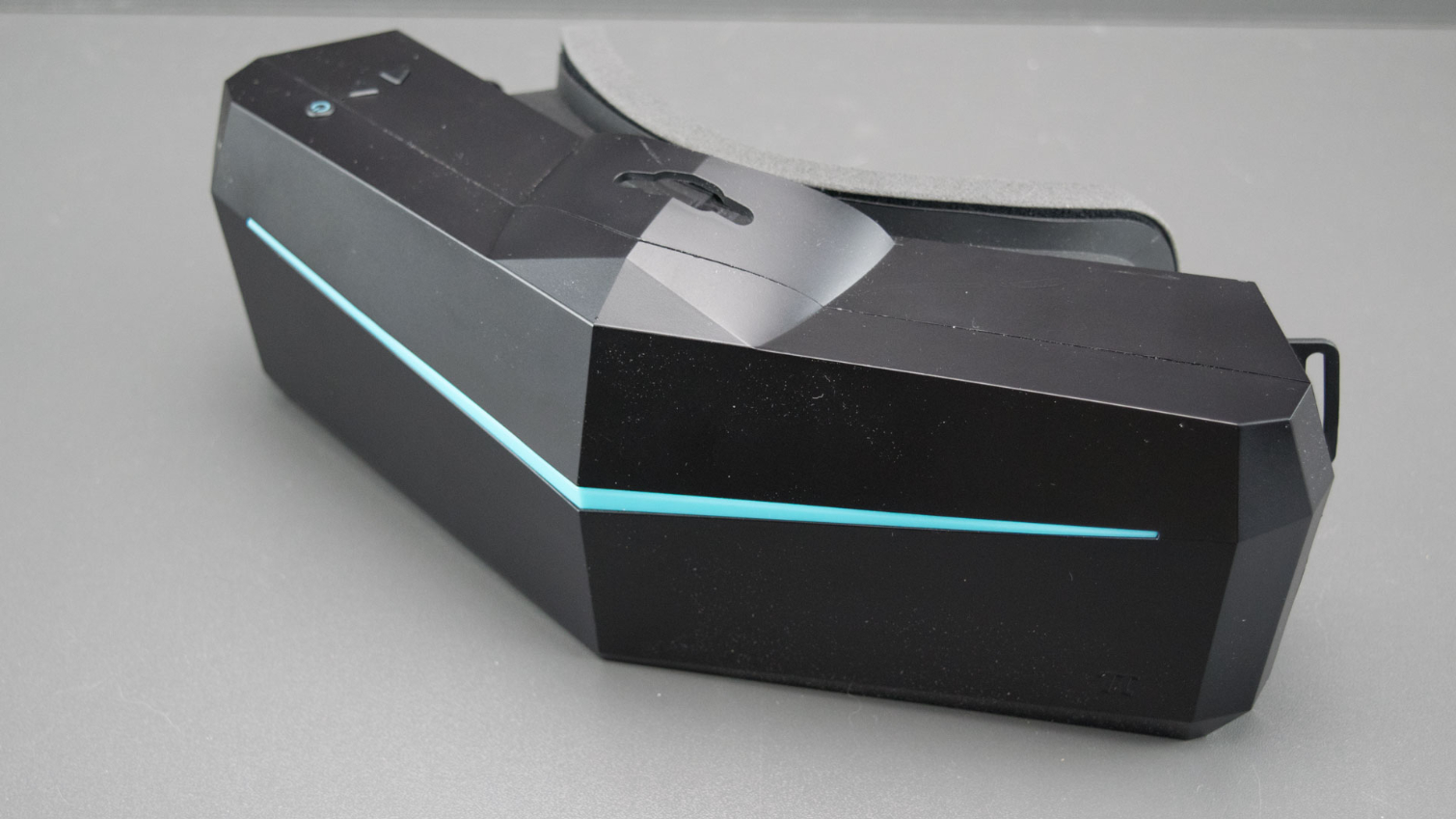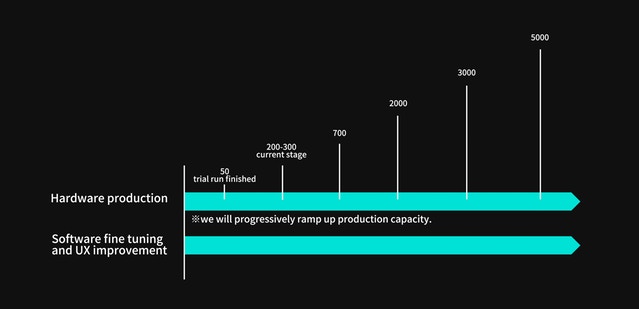Pimax Concedes GTX 1070 Not Powerful Enough to Drive 8K Headset
Pimax issued a progress update about the development of the Pimax 8K headset that may catch a few backers off guard. When Pimax launched the Kickstarter campaign for the 8K headset, the company stated that a Nvidia GTX 1070 would be powerful enough to drive the device. However, the company now concedes that it underestimated the performance needed to keep up with the headset’s demands.
More Demanding Than Expected
Pimax said that you can still run the 8K headset with a GTX 1070, but the GPU can’t handle the full wide-FOV experience. Last month, the company announced that the 8K headset’s software would support a narrower FOV option, but it didn’t fully explain why it created that option. We now know that the narrow FOV option is there for compatibility with less powerful GPUs. Pimax said that it’s engineers have unlocked improved performance to the tune of 30% to 40% in newer games built in Unreal 4.18, and most Unity games. However, Pimax still maintains that a GTX 1070 is the bare minimum. If you expected to run the Pimax 8K headset on a GTX 980 Ti, you should plan to purchase a new GPU when Nvidia drops its next GeForce series later this year.
Pimax is already working with Nvidia to improve driver performance, and the update suggests the company is privy to what’s around the corner. “Another good news is that the next-generation graphics cards and VR technology are around the corner. We cannot disclose details, but you can find relevant information online.” Nvidia’s new graphics cards are rumored to include a USB Type-C interface for VR headsets. It seems a bit late in the development cycle for Pimax to adopt the new standard, but if Pimax wants the 8K headset to be a serious “next-generation” device, it should consider developing a solution such as an optional cable upgrade.
Pimax said that it would offer a trade-in option for backers that aren’t planning to upgrade their GPU any time soon. Pimax is also developing the Pimax 5K headset, which should work well with a GTX 1070, and backers will have the option to downgrade from an 8K headset to a 5K unit with accessories.
Lens Distortions
Pimax originally expected to release the Pimax 8K headset in January. However, the company ran into trouble with its optics solution. Pimax brought a new prototype 8K headset to CES 2018, which had some distortion problems. Since then, Pimax has redesigned its lenses multiple times, which resulted in months of delays and hundreds of thousands of dollars in retooling costs. The company believes that it’s current lens iteration is the final solution, but it hasn’t yet perfected the distortion algorithm.
Pimax said that it is difficult to create a distortion algorithm that works as a “one-size-fits-all” for the 8K headset because it has such a wide FOV. What’s more, the company didn’t have equipment that could measure the distortion beyond 120-degrees. The company’s engineers had to estimate the corrections for the space beyond 120-degrees. Pimax has since invested in new equipment that can measure up to 190-degrees, which should enable it to correct the distortion with better accuracy.
Software Localization Efforts
Pimax is satisfied with its current hardware iteration, and now the company is focusing its efforts towards improving the software side of the equation. In addition to working on improved distortion algorithms, the company is also doubling down on its efforts to finish the companion PiTool software. Pimax said that it is now focused on improving the user experience, and it plans to tap the Pimax community to help with localization efforts to prepare it for a variety of languages.
Get Tom's Hardware's best news and in-depth reviews, straight to your inbox.
Businesses Must Wait
In the last update, Pimax ruffled a few feathers by suggesting that it would begin shipping headsets to business customers ahead of backer fulfillment. The company is now backing down from that plan. Pimax has since adopted a “backers come first, business clients second” mentality, which means that backers won’t face additional delays at the hands of VR arcades and corporate clients.
Business customers may still have a chance to get headsets before some backers, though. Pimax said that it is moving forward with its plans for mass production, but the company isn’t as confident with its software roadmap. Pimax plans to offer backers the option to accept their headset before the software UX is finalized, but they can choose to wait for the complete package. Pimax has business clients ready to pick up the leftover headsets if they are not claimed by backers.
Still Months Away For Most People
Pimax is making progress with the development of the 8K headset, but the company is still a long way from fulfilling its obligation to its Kickstarter backers. Pimax plans to build 230 units in the current batch, and in the following month, it expects to products 700 units. Production will ramp up from there, with approximately 2000 units produced in October. However, Pimax sold nearly 3000 8K headsets last year, which means most backers will be waiting a few more months. At this rate, it's looking like the late stage backers should have their headsets in time for the holidays but not much sooner. And for anyone without a pledge, the Pimax 8K won’t likely be available until next year.
Kevin Carbotte is a contributing writer for Tom's Hardware who primarily covers VR and AR hardware. He has been writing for us for more than four years.
-
TJ Hooker Just a friendly reminder to everyone that this "8K" headset is actually 2x4K (equivalent to two 4k displays). Actual 8k is equivalent to four 4k displays.Reply -
none12345 If a 1080ti, the fastest graphics card right now cant drive a 4k monitor properly(at high-ultra settings). Why would anything think a 1070 could drive (2) 4k screens?Reply
A 1080ti wont be enough for this either. Unless you like like some puke inducing 20-40fps vr.
I guess if you are into low quality graphics settings then a 1080ti can drive it....but whats the point of 2 x 4k vr if you have to drop the graphics settings to crap levels? -
anbello262 Previous articles in this site have stated that it's not true 2x4k. The screens are, but it's actually upscaled in order to make it possible to be driven by current hardware (please, fact check on my statement?).Reply
I don't think there will be a way to "shut down" the scaler once gpus are good enough for real 2x4k, though. -
brenden830 The headset up scales to 4k they aren't running in 4k my 1080 is running 3440 x 1440 at 120 fps so my guess it will run 90fps up scaled to 4kReply -
gasaraki Reply21193318 said:If a 1080ti, the fastest graphics card right now cant drive a 4k monitor properly(at high-ultra settings). Why would anything think a 1070 could drive (2) 4k screens?
A 1080ti wont be enough for this either. Unless you like like some puke inducing 20-40fps vr.
I guess if you are into low quality graphics settings then a 1080ti can drive it....but whats the point of 2 x 4k vr if you have to drop the graphics settings to crap levels?
They have different ways to render that cuts down on the processing, they explained how their headset works at E3 and the other events.
-
olli.honkasalo Pimax 8K does not run anything at 8K. It has double 4K LCD panels that run upscaled WQHD (1440p) signal at roughly 80 Hz, while Pimax 5K has double WQHD OLED panels running native resolution signal at 90 Hz. However since Pimax as company is terrible at giving accurate and timely technical information, even those numbers might not be 100% correct. It's unclear why Pimax claims 5K runs better than 8K, since both have same input resolution with 5K having even higher refresh rate. Possibly the panel makes it appear to run smoother even on low refresh rate? They haven't explained it and M1 prototype testers are still under NDA. We will know more in the future.Reply -
nikkicasali I may be wrong, but what I understood was that the 2 x 4K screens can't handle upscaling at 90 Hz.Reply -
andyz0976 Ofcourse it will not work, the 1070 struggles to even drive a single 4K at an acceptable quality settings in many games, let alone 2*4k@90fpsReply

